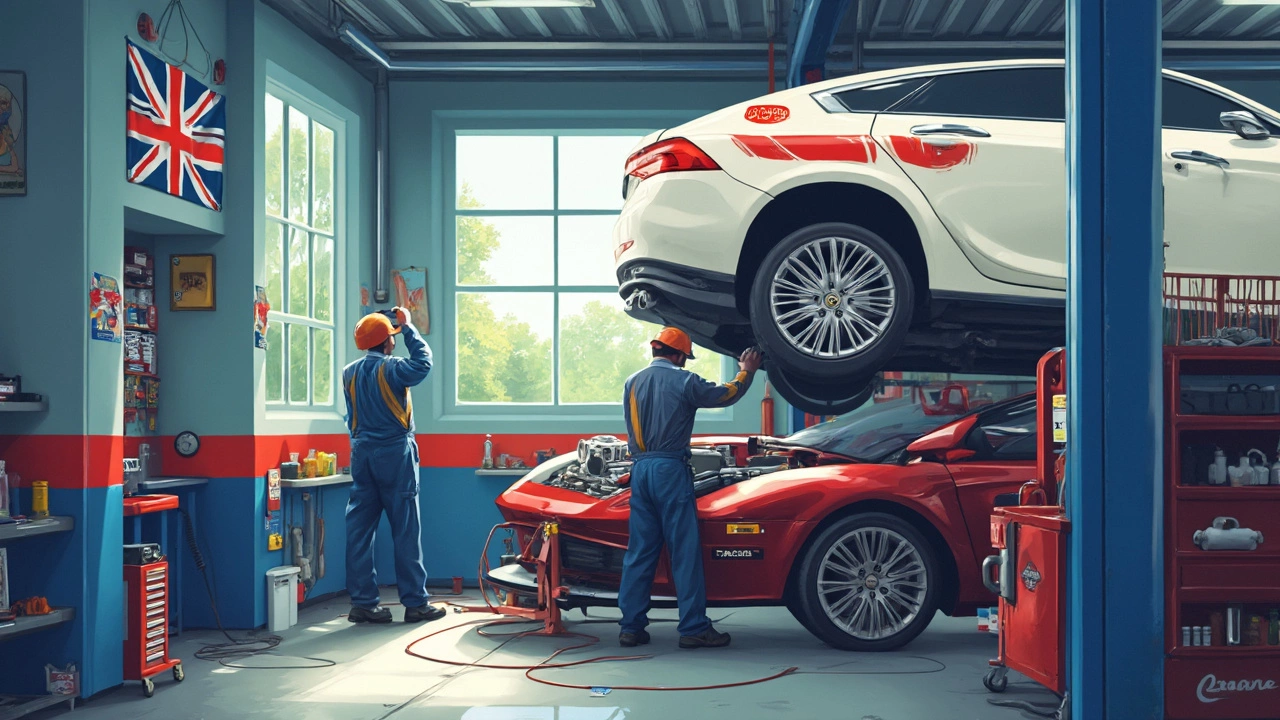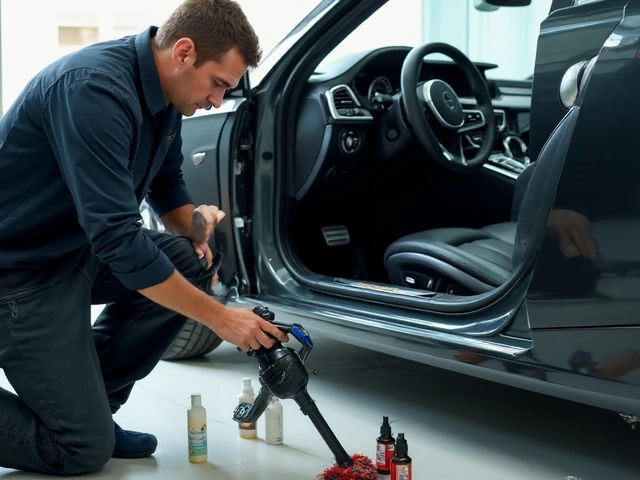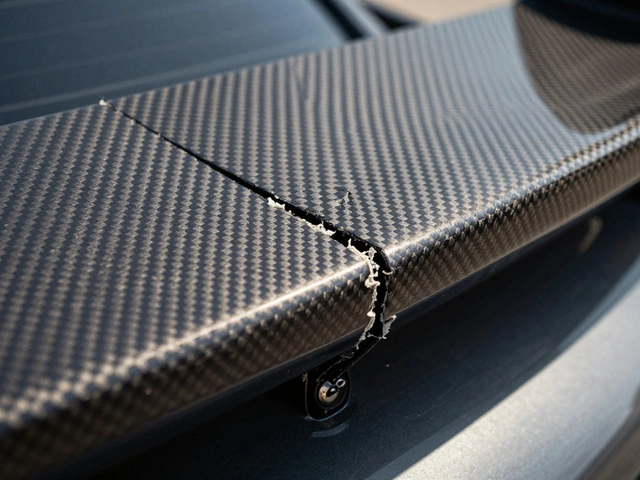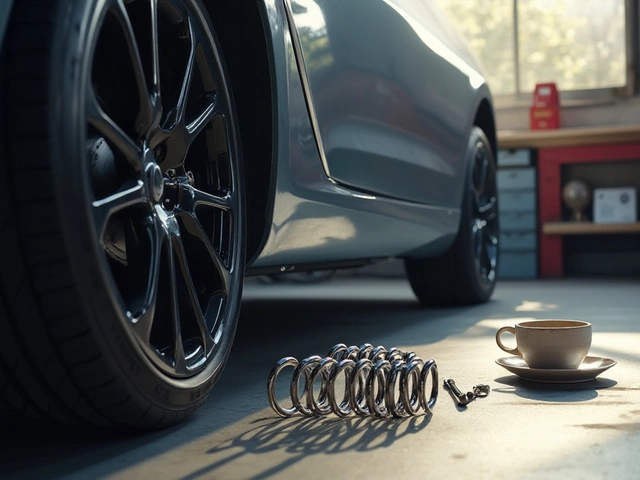You’re probably itching to make your car sound better or boost its power, but you’re stuck on the classic question: start with a tune or an exhaust? Got friends swearing by both sides, right? Here’s the straight-up: each upgrade has a totally different effect on your car. If you’re not clear on what each does, it’s easy to waste cash, or worse, end up with a car that feels off.
Picking between a tune or custom exhaust isn’t just about “which is cooler.” It comes down to what you want—raw power, killer sound, or both. Plus, the order you do these mods can change your results, even if you end up upgrading both. Let’s break down what happens when you start with a tune versus an exhaust, how they work together, and how to dodge common slip-ups people make with their first upgrades. This isn’t just theory, either—these tips come from real shop floors and car meets, not just what some dude said online.
- What a Tune and Exhaust Really Do
- How Each Mod Changes Your Ride
- The Right Order (and Why It Matters)
- Common Mistakes and Smart Tips
What a Tune and Exhaust Really Do
If you’re new to this, tuning and custom exhaust swaps aren’t just cool words car guys throw around. They actually change how your car drives and feels. A tune is basically a software upgrade for your car’s computer. When you get a tune, techs (or a handheld programmer) change the factory settings in your engine control unit (ECU). The goal? More power, better fuel delivery, and usually way snappier throttle response. On most modern cars, especially turbo models, a tune alone can unlock hidden power the factory left on the table for safety or emissions. Think of it like flipping your car’s "easy mode" off.
Custom exhaust, on the other hand, is all about what comes out after the engine. When you change your exhaust system, you’re swapping out pipes, mufflers, and maybe the catalytic converter. The new setup lets the motor breathe easier by cutting down backpressure. You usually get a better sound, less restriction, and sometimes a bump in horsepower—especially if your stock exhaust is super restrictive.
Let’s clear it up with a quick table, side by side:
| Upgrade | What It Changes | Typical Gains | Other Effects |
|---|---|---|---|
| Tune | Engine computer software | 5–50+ HP (biggest jump on turbo cars) | MPG can drop if you drive hard; changes how pedal feels |
| Exhaust | Pipes, mufflers, catalytic converter | 2–15 HP (depends on engine and setup) | Louder sound, lower weight, sometimes legal issues |
If you’re driving a turbo car, like a Golf GTI or EcoBoost Mustang, a tune alone can blow your mind—people sometimes see up to 20%-30% more power at the wheels. But for naturally aspirated cars (no turbo), the power bump from a tune is a lot smaller. With exhausts, the noise upgrade is instant for almost any car, but actual horsepower depends on how stuffed up the stock pipes are. Some new cars have exhausts that flow pretty well, so the boost may be more about sound than power.
How Each Mod Changes Your Ride
Let’s break it down: A tune and an exhaust hit different parts of your car’s personality. First up, the tune. When you get a custom or off-the-shelf tune, you’re changing how your engine runs. Think fuel maps, ignition timing, boost if you’ve got a turbo, and more. The main goal here is to squeeze out more horsepower, cleaner throttle response, and sometimes better gas mileage, depending on how wild you go. Most people see real gains with a tune, especially turbo car owners—sometimes 10% to 20% more power, no joke.
Now, the exhaust. Swapping to a custom exhaust is more about getting the gases out of your engine faster and with less restriction. Usually, that means chucking the stock exhaust for one with bigger piping and less baffling in the muffler. What do you actually get? You’ll notice a much deeper, louder sound. Power gains are there, but unless you’ve already made other upgrades or tuned your engine, it’s usually just a few extra horsepower—on average, you’re looking at 2-5% more. For turbo engines, a downpipe and exhaust together can make a bigger impact when paired with a tune.
Here’s the difference in impact at a glance:
| Upgrade | Average Power Gain | Sound Change | Cost Range (2025) |
|---|---|---|---|
| Tune | 10-20% | No change | $300-$800 |
| Exhaust | 2-5% | Significant | $500-$1200 |
If you’re all about that noise, exhaust is your ticket. Want more punch when you hit the gas? A tune changes how your whole car feels—especially if it’s turbocharged. But the magic really happens when you do both. For the most “wow” factor, pairing a tune and exhaust can unlock more horsepower and make your car sound tough. Just remember: for most cars, adding an exhaust first makes tuning later even more effective, since your engine can breathe way easier.

The Right Order (and Why It Matters)
Deciding which upgrade comes first—tune or exhaust—totally changes what you get from your car and how smoothly the mods work together. Mess this up, and you might waste money or not feel any gain at all. Let’s get real about how this order actually impacts both sound and power.
If you pick an exhaust upgrade before tuning, you’ll instantly change the car’s sound, shed a few pounds (since stock exhausts are heavier), and maybe see a tiny bump in horsepower. The exhaust is mostly about better flow: reducing how much the engine has to "work" to push out air. For modern cars, a cat-back or axle-back system can add 2-5% more power, but honestly, you’ll notice the difference more in your ears than your seat. Some guys even swap just the muffler for a little sound boost.
But here’s the kicker: if you slap on a new exhaust and do nothing else, your car’s computer doesn’t really adjust. Modern engines run rich from the factory for safety. They don’t magically re-map themselves for the better flow. So you leave performance on the table unless you tune next.
Flip that—if you tune first, especially on a bone-stock car, you can see solid gains. A basic ECU tune on its own often nets 10-20 extra horsepower in turbocharged cars, less in naturally aspirated ones. But here’s the trade-off: if you tune to match stock exhaust, then bolt on a bigger exhaust later, you’ll need a re-tune to avoid running too lean. That’s an extra cost, and more time off the road.
- If your main goal is sound and you’re not chasing every last horsepower, exhaust first is fine.
- If you care about squeezing real power and efficiency, do both at once (the dream), or exhaust first, then tune to match it.
- Skipping the tune after an exhaust swap? You won’t break things, but you’re shortchanging yourself on what the upgrade can actually do.
Here’s a quick look at real-world numbers most people see:
| Upgrade Choice | Typical Cost (USD) | HP Gain (Turbo Car) | Noticeable Sound Change? |
|---|---|---|---|
| Exhaust First | $400-1,500 | 2-12 HP | Yes |
| Tune First | $350-1,000 | 10-20 HP | No |
| Exhaust, Then Tune | $750-2,500 | 15-35 HP (total) | Yes |
So yeah—if you’ve got the budget, do both, exhaust then tune. If not, think about what matters most: that satisfying growl or a punchier drive. Nobody regrets doing their homework first.
Common Mistakes and Smart Tips
Messing up the order of upgrades or skipping research is where most people go wrong. If you bolt on a new exhaust without knowing what it really does for your car, or chase the biggest tune file you can buy, you’re not just risking cash—you could screw up your ride’s performance.
- Ignoring the Car’s Factory Limits: Most stock ECUs have built-in safety nets. If you tune first but still have a restrictive factory exhaust, your engine can only get so much extra power before it pulls back. You’ll end up with numbers that look good on paper but feel disappointing behind the wheel.
- Chasing Sound, Not Performance: Some folks dump money into a loud custom exhaust thinking it’ll make the car fast. Sure, it can sound mean, but a stock tune won’t take advantage of the lower back pressure. Want real gains? Marry sound with better airflow and a tune designed for it.
- Forgetting About Emissions and Warranty: Swap out exhaust parts too aggressively, and you can end up with annoying check engine lights or trouble at inspections. Some cars even void warranties if you jump straight to a tune before making exhaust or intake changes.
- Not Budgeting for Supporting Mods: A bigger exhaust pipe or a sharp tune sometimes needs upgraded sensors or even a better intake. Skipping these can leave you with a ride that stumbles or runs hot.
Here’s a simple table showing some real-world data on gains and trade-offs for common upgrades on modern turbo cars:
| Upgrade | Avg. Power Gain (HP) | Avg. Cost (USD) | Possible Issues |
|---|---|---|---|
| Exhaust Only | 5-15 | $350-$1500 | Louder sound, little power boost unless tuned |
| Tune Only | 10-40 | $350-$700 | Limited by stock exhaust, can void warranty |
| Exhaust + Tune | 25-60 | $700-$2200 | Needs good fuel, higher emissions |
Here’s how you can avoid rookie errors and make your upgrades count:
- Plan your upgrades around what you actually want—show, go, or a mix.
- Stick to quality brands for both the exhaust and tune. Cheap knock-offs sound good for your wallet, but can wreck your car long-term.
- Ask around. Forums, local shops, or even events can clue you in to what actually works on your make and model. Someone with the same car and a few more miles of mods usually has the best tips.
- Get baseline dyno runs if you can. It’s not as expensive as you might think, and it’ll show you whether your spend was worth it—not just what the manufacturer promises.
Skipping these tips is how you end up with an exhaust that drones on the highway, a tune that makes your car knock, or even worse—a check engine light that never goes away.






